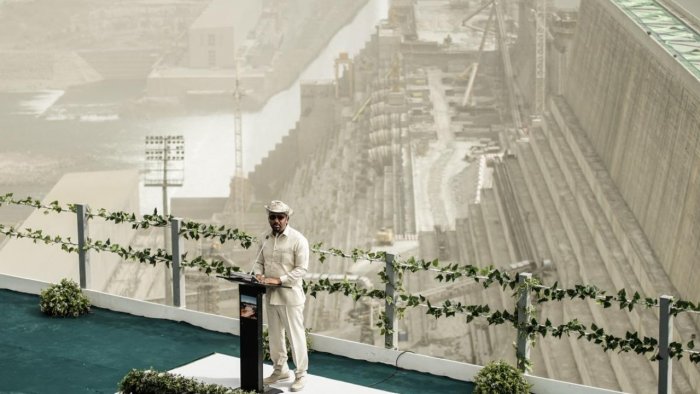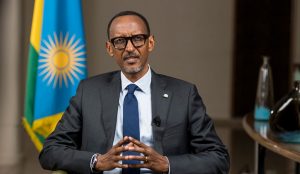GUBA – Ethiopian Prime Minister Abiy Ahmed on Sunday inaugurated power generation from the country’s mega-dam on the Blue Nile, a milestone in the controversial multi-billion dollar project.
Accompanied by senior officials, Abiy toured the power plant and pressed a series of buttons on an electronic screen, a move that kickstarted production.
“This great dam was built by Ethiopians, not just for Ethiopians, but for the benefit of all our African brothers and sisters,” said an official who presided over the opening ceremony.
“The day when every Ethiopian has sacrificed, hoped and prayed has finally come.”
The Grand Ethiopian Renaissance Dam (GERD) is set to become Africa’s largest hydroelectric dam but has been at the center of a regional dispute since work began in 2011.
Ethiopia’s downstream neighbors Egypt and Sudan see it as a threat due to their reliance on Nile water, while Addis Ababa sees it as essential for its electrification and development.
The $4.2 billion project is expected to eventually produce more than 5,000 megawatts of electricity and more than double Ethiopia’s power output.
State media reported that the dam began producing 375 megawatts of power from one of its turbines on Sunday.
PROJECT DELAYS
The 145 meter high dam is located on the Blue Nile in the Benishangul-Gumuz region of western Ethiopia, not far from the border with Sudan.
Egypt, which is about 97% dependent on the Nile for irrigation and drinking water, sees the dam as an existential threat.
Sudan hopes the project will regulate the annual floods, but fears its own dams could be damaged without an agreement on how to operate the GERD.
The two countries have lobbied Ethiopia for a binding agreement on how to fill and operate the giant dam, but talks under the auspices of the African Union (AU) failed to yield a breakthrough. .
The dam was launched under former Prime Minister Meles Zenawi, the leader of the Tigrayans who ruled Ethiopia for more than two decades until his death in 2012.
Civil servants paid a month’s salary to the project the year it was launched, and the government has since issued dam bonds targeting Ethiopians at home and abroad.
But on Sunday, officials credited Abiy with restarting the barrage after what they called mismanagement stunted his progress.
“Our country has lost so much because the dam has been delayed, especially financially,” project manager Kifle Horo said in his remarks.
Among those present at Sunday’s ceremony were First Lady Zinash Tayachew, the Speakers of the Lower House of Parliament and the Supreme Court, regional presidents and government ministers.
The process of filling the vast GERD reservoir began in 2020, when Ethiopia announced in July this year that it had reached its target of 4.9 billion cubic meters.
The total capacity of the reservoir is 74 billion cubic meters and the goal for 2021 was to add 13.5 billion.
Last July, Ethiopia said it had met that target, meaning there is enough water to start generating power, although some experts have questioned those claims.





